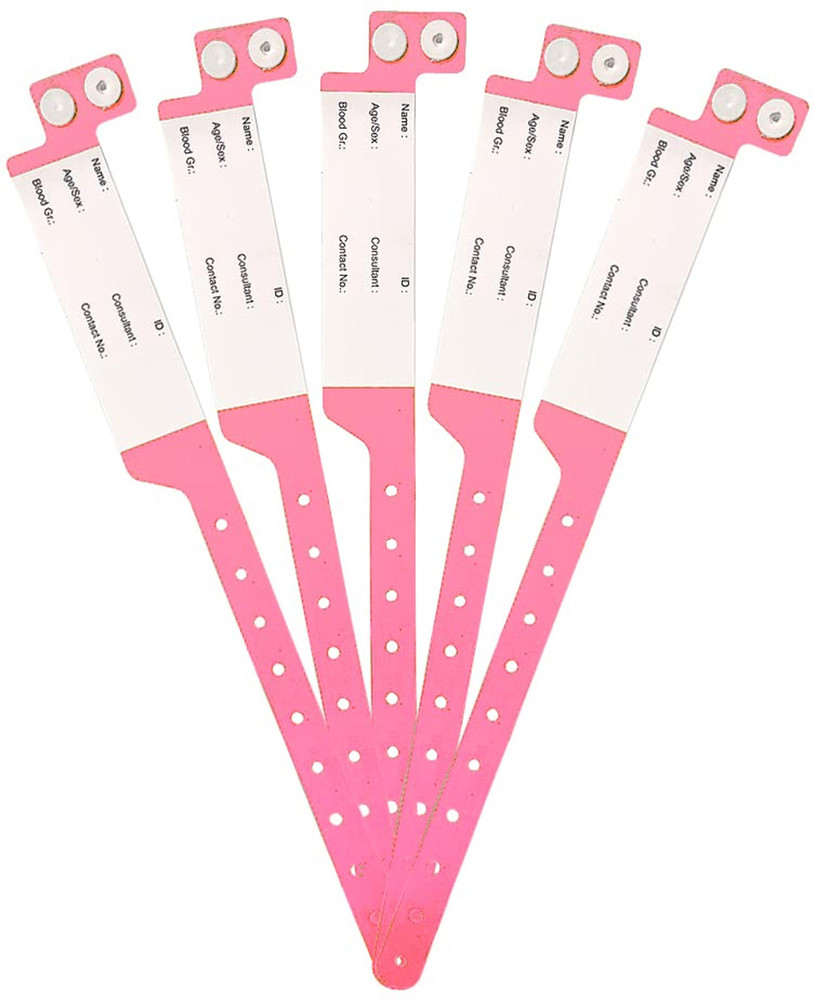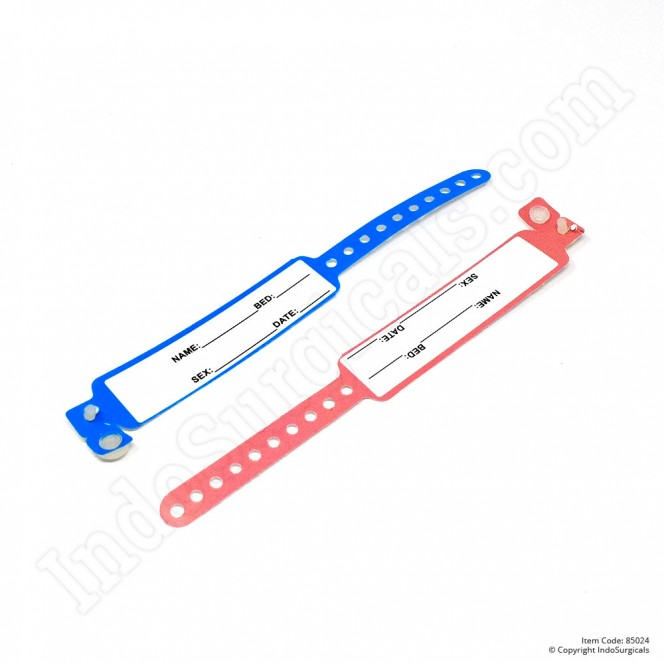Exploring the Advantages of a Patient Identification Band in Preventing Medical Errors
Exploring the Advantages of a Patient Identification Band in Preventing Medical Errors
Blog Article
Discovering the Different Sorts Of Patient Identification Band Made Use Of in Medical Facilities
In the elaborate world of medical care, the crucial duty of Patient Identification bands often goes undetected. These bands, varying from simple paper wristbands to innovative RFID bands, develop the backbone of Patient security methods, making sure precision in Patient Identification. The huge diversity of these bands, each with its one-of-a-kind advantages and limitations, is usually neglected. As we navigate via this topic, one might acquire understanding into the refined complexities and important significance of such bands in clinical facilities.
Understanding the Importance of Patient Identification Bands
While they might seem like simple accessories, Patient Identification bands play a crucial duty in medical centers. These bands function as a critical tool for verifying Patient identity, avoiding clinical mistakes related to misidentification. The bands usually present essential information such as the Patient's name, age, blood type, and any known allergies. They allow medical care professionals to quickly access this vital info, therefore facilitating accurate and prompt medical therapy. Patient Identification bands also aid in improving administrative tasks, guaranteeing accurate record-keeping and billing. Despite their simplicity, these bands embody the concept of Patient safety and security, a keystone of top quality healthcare. Without them, the threat of clinical mistakes, and as a result, Patient harm, may dramatically increase.
Conventional Paper Wristbands: Their Use and Limitations
Typical paper wristbands have been a staple in Patient Identification across various medical facilities. While their use prevails, they nurture particular constraints that might affect their performance in Patient monitoring. This area will certainly focus on the scope of their application and the fundamental disadvantages related to their use.
Paper Wristbands: Usage Scope
In the realm of Patient Identification, paper wristbands have long held a crucial role. These bands are normally used in outpatient setups, where the Patient's remain is short-term. Regardless of developments in modern technology, the humble paper wristband stays a reliable and affordable option for Patient Identification in different health care circumstances.
Limitations of Paper Wristbands
Despite their extensive usage, paper wristbands are not without their drawbacks. In addition, paper wristbands usually do not have the technical capabilities of even more modern-day alternatives, such as barcoding or RFID chips, restricting their capability to merely presenting composed details. Paper wristbands can trigger pain or skin irritability to some people, particularly when worn for extended periods.
Barcoded Wristbands: Advancements in Patient Identification
While Patient Identification has actually long been a crucial element of health care, the advent of barcoded wristbands signifies a substantial jump ahead. These bands utilize the simplicity of barcoding modern technology, permitting for Patient info to be promptly scanned and accessed. They enhance the speed and precision of Patient Identification, minimizing the threat of clinical mistakes associated to misidentification.
Superhigh Frequency Identification (RFID) Bands: a Step In The Direction Of Futuristic Medical Care
The development of Patient Identification bands has actually brought regarding the appearance of Superhigh frequency Identification (RFID) Bands (patient identification band). These innovative tools existing essential advantages for medical care centers, providing a more reliable and technically advanced methods of Patient Identification. The implementation of RFID in medical care is a substantial step towards an extra advanced method to Patient administration and security
Understanding RFID Bands

RFID Bands: Key Benefits
Largely, these bands improve Patient safety and security by providing accurate, immediate Identification, thereby decreasing clinical mistakes. RFID bands can save a large amount of Patient information, including medical history and allergies, allowing individualized treatment. Overall, RFID bands represent a considerable improvement in Patient Identification innovation, profiting both clients and medical care service providers.
Applying RFID in Healthcare
As we step right into a highly advanced age, the implementation of RFID bands in health care becomes progressively essential. These bands provide a seamless method to track and determine clients, ensuring their safety and boosting performance in treatment procedures. RFID bands provide many advantages over conventional Identification approaches. They can save a vast amount of information, consisting of the Patient's case history and therapy plans, which can be easily accessed by doctor. This information helps doctors make informed choices relating to the Patient's treatment strategy. RFID bands lower medical errors by giving precise Patient Identification, which is essential in preventing misdiagnosis or incorrect medication management. Therefore, the implementation of RFID bands is a significant action towards boosting Patient safety and health care delivery.

Color-Coded Wristbands: Helping in Quick and Accurate Diagnosis
In the bustling environment of a medical center, color-coded wristbands have actually become important devices for swift and precise Identification of an individual's medical condition. These wristbands, put on by individuals, bring specific shades that represent different medical conditions or standings. Red could indicate allergic reaction dangers, while yellow might indicate an autumn risk. This system is made to use immediate aesthetic cues to doctor, improving Patient security and care quality. In emergency situation circumstances, using these wristbands enables rapid decision-making. The performance of color-coded wristbands depends on the uniformity of shade interpretation throughout medical care organizations, requiring typical standards for constant application.
Approaches for Efficient Application and Management of Patient ID Bands
Achieving optimum use of Patient Identification bands demands a well-structured technique for their implementation and administration. The very first step entails training all health and wellness workers on the relevance of appropriately using and reviewing these bands. Web Site Healthcare facilities must standardize the use of ID bands across all departments, guaranteeing uniformity and reducing discrepancies. Normal audits needs to be performed to validate adherence to plans and to correct any inconsistencies. Patient education and learning is likewise critical; individuals need to comprehend the purpose of the bands and the need for their consistent wear. patient identification band. It's crucial to have a back-up plan in place, such as barcode scanning or biometrics, to ensure that Patient Identification is never compromised.
Conclusion
Patient Identification bands are vital in medical facilities to make certain safety and precision. Conventional paper, barcoded, RFID, and color-coded wristbands each hold one-of-a-kind advantages, varying from cost-effectiveness to advanced information storage and immediate medical informs. Effective application and management of these bands can significantly minimize clinical errors, improve efficiency, and enhance total Patient care. Therefore, understanding and making use of these Identification devices is critical for keeping high standards in medical care.
These bands, varying from straightforward paper wristbands to advanced RFID bands, develop the backbone of Patient safety procedures, making sure accuracy in Patient Identification.The evolution of Patient Identification bands has actually brought about the appearance of Radio Frequency Identification (RFID) Bands. In general, RFID bands stand for a considerable advancement in Patient Identification click here to find out more modern technology, benefiting both individuals and health care providers.
RFID bands reduce medical mistakes by giving exact Patient Identification, which is important in avoiding misdiagnosis or wrong medication management. Patient education and learning is likewise essential; clients need to understand the objective of the bands and the demand for their continuous wear.
Report this page